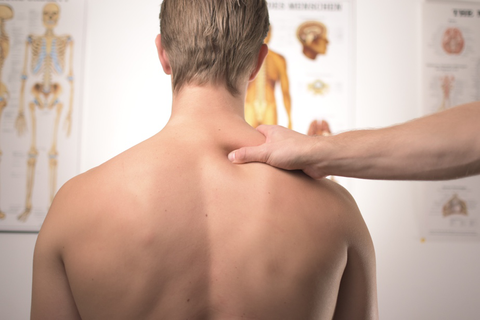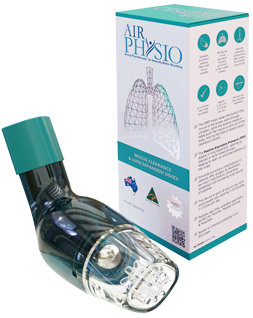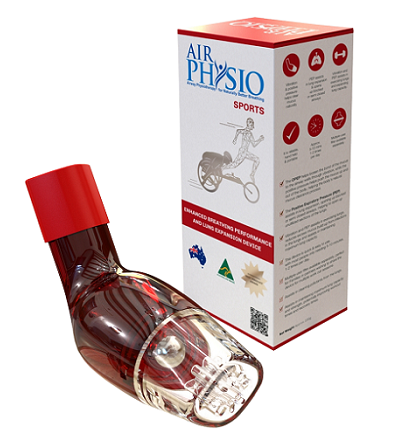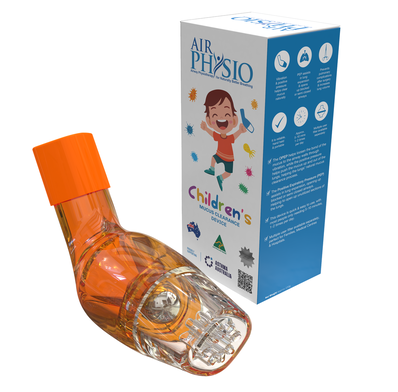Hyperexpanded Lungs – Causes, Symptoms & Treatments
Hyperexpanded lungs are also known as hyperinflated lungs, and they are a result of air that has been trapped inside the lungs. The air that is trapped inside the lungs causes the lungs to become hyperexpanded and abnormally large. The trapped air takes up room in the lungs and prevents fresh air from entering.
Your lungs feel like they are not getting enough air because of how much air has become trapped inside the lungs. This causes you to inhale more air which ultimately results in your lungs becoming overinflated and hyperexpanded.
Causes of Hyperexpanded Lungs
Hyperexpanded lungs can be caused by something as minor as overexertion from exercising to a major respiratory disease like chronic obstructive pulmonary disease (COPD). If you know you have a respiratory illness such as COPD or emphysema, then you can likely expect to suffer from hyperexpanded lungs.
Hyperexpanded lungs due to overexertion from exercising is called dynamic hyperinflation. Dynamic hyperinflation is when you begin to take a breath before your lungs have returned to their equilibrium. In other words, your lungs are not completely emptied of air before you begin to take your next breath. This is a type of hyperexpanded lungs.
Static hyperinflation is the type of hyperexpanded lungs that relates to most respiratory illnesses. Hyperexpanded lungs can be caused by many different respiratory illnesses that cause air to become trapped inside the lungs. The most common and severe respiratory illnesses that cause hyperexpanded lungs include COPD, emphysema, chronic bronchitis, and chronic asthma.
Other respiratory issues that can cause hyperexpanded lungs include mild asthma, bronchiolitis, and cystic fibrosis. These respiratory illnesses can cause blockages in your airways and cause you to experience shortness of breath. Shortness of breath leads to taking more breaths that will often overinflate the lungs and cause them to become hyperexpanded.
Symptoms of Hyperexpanded Lungs
There are many symptoms you can experience when suffering from hyperexpanded lungs. The most common symptoms of hyperexpanded lungs include the following:
- Shortness of breath
- Struggling to breathe
- Difficulty inhaling or catching your breath
- Low levels of energy
- Fatigue
- Lethargy
Whether you have dynamic hyperinflation or static hyperinflation, the symptoms are generally the same. The only difference between dynamic hyperinflation and static hyperinflation is that an activity or exercise typically causes dynamic hyperinflation.
For example, climbing up a flight of stairs can cause you to have shortness of breath or difficulty inhaling. This is known as dynamic hyperinflation, which means you can pinpoint the exact cause of the hyperexpanded lungs.
More severe respiratory illnesses like COPD and emphysema can make hyperexpanded lungs more uncomfortable and problematic. Because hyperexpanded lungs cause shortness of breath and difficulty breathing, it can aggravate and inflame the airways of the lungs in those who have COPD. This means that a relatively mild respiratory condition can quickly turn into a moderate to a severe respiratory issue when the person is suffering from COPD, emphysema, or other serious respiratory problems.
Diagnosis of Hyperexpanded Lungs
Hyperexpanded lungs are sometimes difficult to diagnose. Your doctor will want to listen to your breathing through a stethoscope to determine if he or she can hear any respiratory abnormalities as you breathe. Because hyperexpanded lungs can be triggered through exercise or overexertion, your doctor may order you to perform a series of exercises so that he or she can test your lung performance afterwards.
If you suffer from COPD, emphysema, or chronic asthma, your doctor will likely order an MRI, chest x-ray, or CT scan to examine your lungs. This will give your doctor the clearest picture of the condition of your lungs and if they are hyperexpanded due to respiratory issues.
Treatment of Hyperexpanded Lungs
To know how to treat hyperexpanded lungs, you have to first know what is causing it. The treatment for hyperexpanded lungs can vary depending on what is considered the primary cause of the issue. Treatment can be through using medications or physical therapies like changing your posture or through practicing breathing exercises.
TREATMENT THROUGH MEDICATION
Your doctor may order an image of your lungs to determine the severity of the hyperexpanded lungs, especially if the cause is from respiratory diseases like COPD or emphysema.
If hyperexpanded lungs are caused by exercise or overexertion, your doctor will likely prescribe a bronchodilator or rescue inhaler. A rescue inhaler is used when the airways of the lungs become inflamed, irritated, or constricted.
Because hyperexpanded lungs are a result of air that becomes trapped inside the lungs causing you to feel out of breath or shortness of breath, a rescue inhaler will help relax the airways in the lungs. This helps you breathe easier, which prevents your lungs from becoming overinflated and hyperexpanded.
If hyperexpanded lungs are caused by COPD or emphysema, the treatment may not be as simple or instantaneous. This is because COPD and emphysema are chronic and progressive respiratory diseases that gradually get worse over time, making it recommended to treat hyperexpanded lungs before it happens.
Symptoms of COPD and emphysema include frequent coughing, shortness of breath, and difficulty breathing. When these symptoms occur, hyperexpanded lungs are a direct result because of how difficult it can be to breathe for those with COPD and emphysema. This causes air to become trapped inside the lungs, which is what causes hyperexpanded lungs.
To prevent hyperexpanded lungs in those who have COPD and emphysema, treatment will need to have already begun. Those with COPD and emphysema will likely have a nebulizer with respiratory inhalant medication as well as a steroid to treat the symptoms of COPD and emphysema. These medications will relax the airways and the sacs in the lungs to prevent the shortness of breath and difficulty breathing that leads to hyperexpanded lungs.
Finally, using oxygen therapy can help prevent the onset of hyperexpanded lungs. Oxygen therapy will help the body become saturated with oxygen which fills the lungs with oxygen rather than trapped carbon dioxide or other combinations of air. This prevents the lungs from becoming overinflated, which is what leads to hyperexpanded lungs.
TREATMENT THROUGH PHYSICAL THERAPY
You can improve the symptoms of and complications of hyperexpanded lungs through a variety of physical therapies you can practice at home. This includes practicing your breathing, improving your posture, quitting or reducing smoking, and walking.

Breathing Techniques
You can improve and potentially prevent hyperexpanded lungs from occurring by practicing your breathing through a technique called pursed-lip breathing. Pursed-lip breathing will slow your breathing down to a rate where the air trapped inside your lungs will escape, allowing oxygen to fully fill your lungs rather than trapped air.
Follow these steps to successfully practice pursed-lip breathing:
- Sit down in a chair with your back straight and your arms stretched out in front of you.
- Relax your shoulders and back muscles.
- Breathe in slowly through your nose while keeping your mouth closed. To make sure you are inhaling slowly, count slowly to three.
- Open your mouth slightly as you would if you were going to whistle.
- Exhale all of the air in your lungs slowly through your pursed lips. The goal is for this to take longer than the time it took to inhale the air so that you eliminate all of the excess air that has been trapped inside the lungs.
- Repeat this process until your breathing has returned to normal.
Pursed-lip breathing is effective because it brings oxygen into your lungs and pushes the carbon dioxide out of your lungs. This allows the trapped air to escape while the oxygen saturates the blood in the body.
Reduce or Quit Smoking
Smoking is the leading cause of COPD and emphysema, which are the two leading respiratory illnesses that cause hyperexpanded lungs. By reducing or quitting smoking, you significantly lower the causes and symptoms of hyperexpanded lungs by allowing clean, fresh oxygen to enter your body and carbon dioxide and other toxins to be removed.
Walking

Walking is a great way to improve your cardiovascular system. This is known as pulmonary rehabilitation, and it works by improving your respiratory system through strengthening the diaphragm muscles within the body.
Walking between 15 and 20 minutes a day can build up these muscles to the point where breathlessness does not occur after the 15 or 20-minute walk. This will significantly improve the symptoms and complications due to hyperexpanded lungs.
Conclusion
Hyperexpanded lungs can occur as static hyperinflation or dynamic hyperinflation. Static hyperinflation occurs when you are sitting still, and no physical activity has been performed to cause the lungs to become hyperexpanded. This is typically related to respiratory diseases like COPD or emphysema and will likely require daily preventative treatment to reduce the symptoms.
Dynamic hyperinflation is typically caused by physical activity, such as exercise or walking up a flight of stairs. This can be managed by using a bronchodilator to relax the muscles in the lungs to allow you to catch your breath.
To avoid using medications, you can practice pursed-lip breathing and walking to naturally build up your respiratory system to prevent your lungs from becoming hyperexpanded.
Average Lung AirPhysio
ENJOY BETTER BREATHING - Use this 100% Drug Free Device - AIRPHYSIO

Recent Posts
Sports AirPhysio
IMPROVE YOUR SPORTING PERFORMANCE - Use this 100% Drug Free Device - AIRPHYSIO

AirPhysio Child
BETTER BREATHING FOR YOUR CHILD - Use this 100% Drug Free Device - AIRPHYSIO

Categories
- asthma (2)
- atelectasis (2)
- bronchiectasis (2)
- copd (3)
- cystic-fibrosis (45)
- featured (10)
- uncategorized (2)


